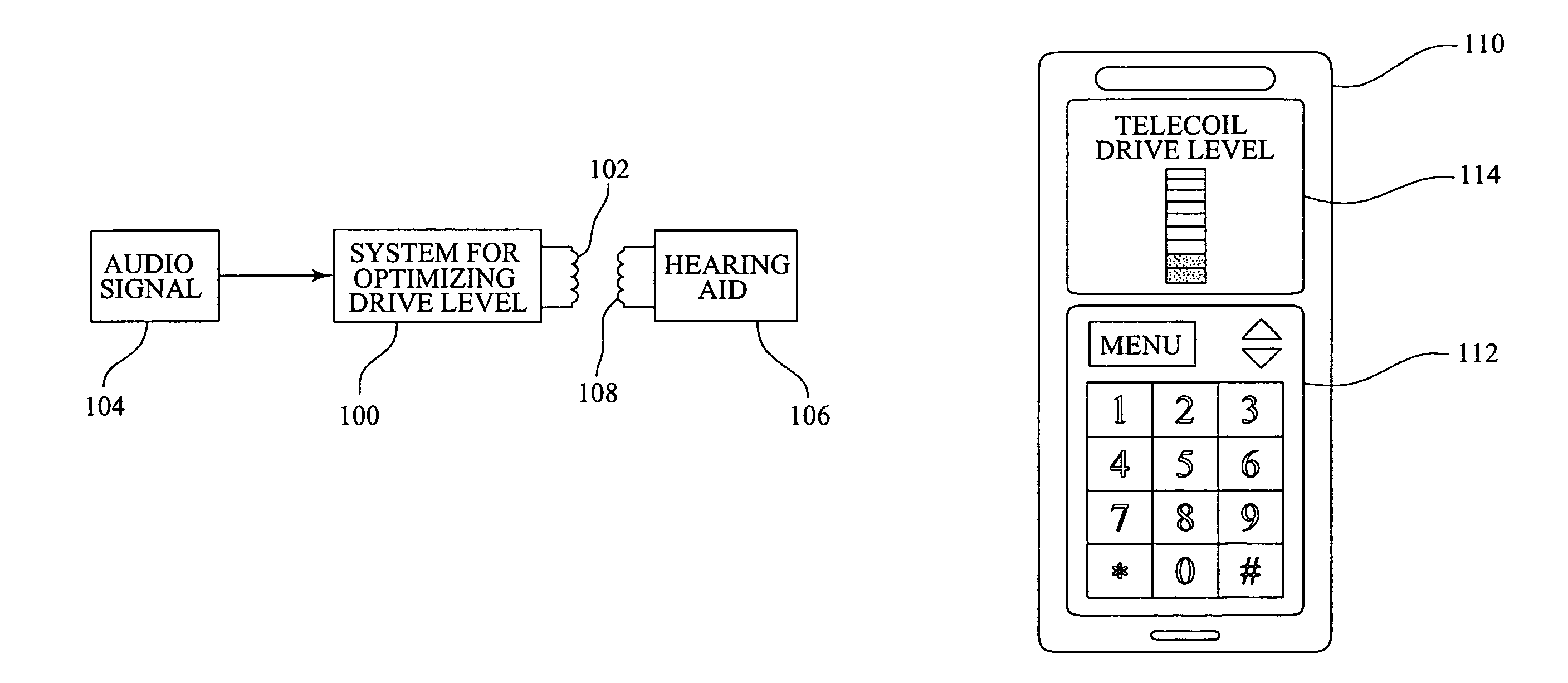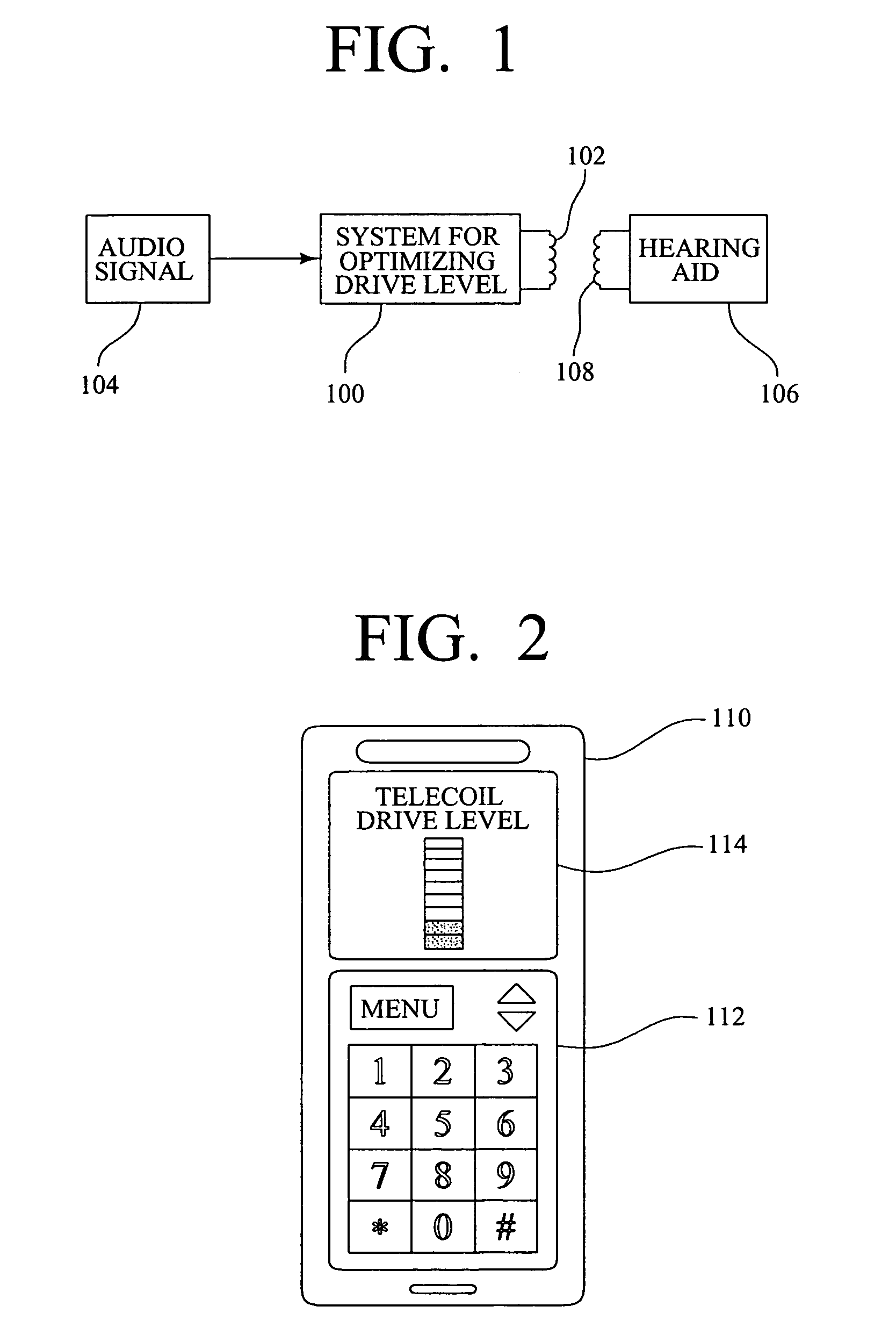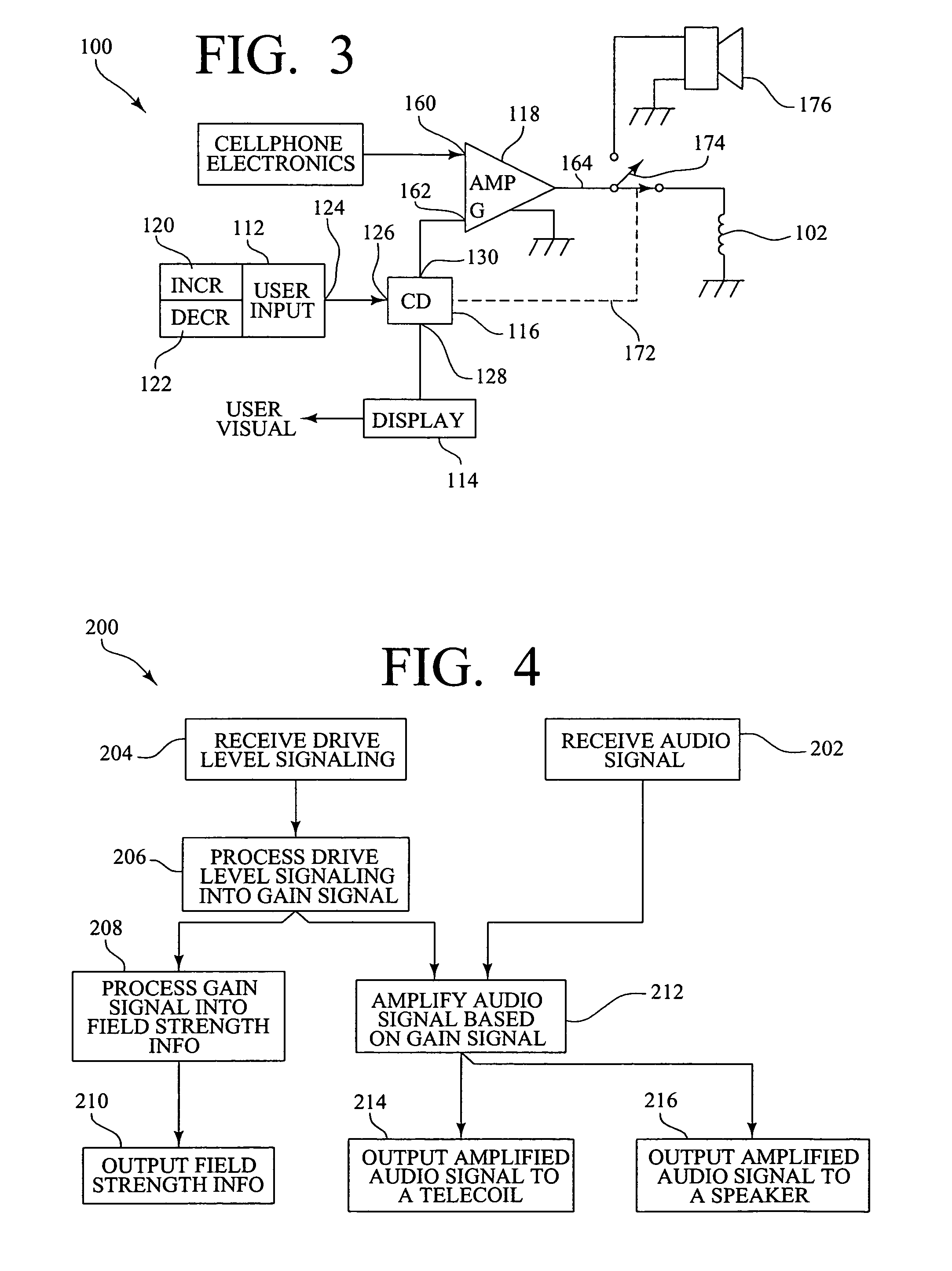System and method for optimizing the strength and orientation of the inductive field of a hearing aid compatible device
- Summary
- Abstract
- Description
- Claims
- Application Information
AI Technical Summary
Benefits of technology
Problems solved by technology
Method used
Image
Examples
Embodiment Construction
A. Drive Level Optimization
[0089]As shown in FIG. 1, an exemplary system 100 for optimizing the drive level of the inductive signal of a hearing aid compatible (HAC) device works in conjunction with a transmitting telecoil 102 to transform an audio 104 signal into an inductive signal for transmission to a hearing aid equipped 106 with a receiving telecoil 108.
[0090]FIG. 2 shows such an exemplary system as might be incorporated into a HAC device 110 such as a wireless telephone. Other HAC devices that might utilize this system include wireline phones, cordless phones, and personal entertainment devices such as radios, stereos, CD players, MP3 players, etc. Such a HAC device may have a user input device 112, such as a keypad having an up button and a down button, and a display device 114, such as an LCD display. In operation, the user might access the system through a menu system in the phone with the assistance of a menu button. Upon calling up the system, the display device 114 may ...
PUM
 Login to View More
Login to View More Abstract
Description
Claims
Application Information
 Login to View More
Login to View More - R&D
- Intellectual Property
- Life Sciences
- Materials
- Tech Scout
- Unparalleled Data Quality
- Higher Quality Content
- 60% Fewer Hallucinations
Browse by: Latest US Patents, China's latest patents, Technical Efficacy Thesaurus, Application Domain, Technology Topic, Popular Technical Reports.
© 2025 PatSnap. All rights reserved.Legal|Privacy policy|Modern Slavery Act Transparency Statement|Sitemap|About US| Contact US: help@patsnap.com



